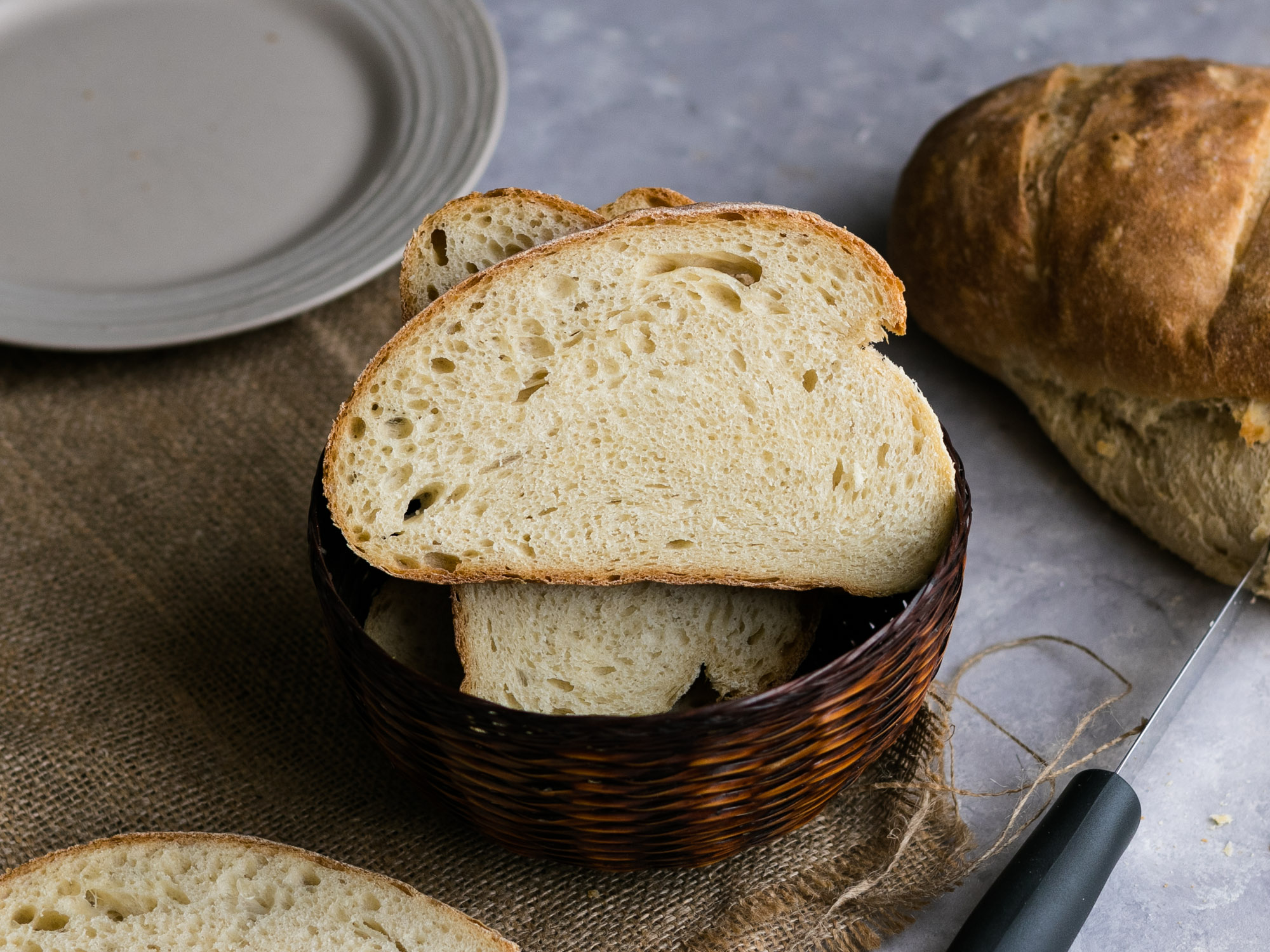Not Really Sourdough Loaf

When people ask about baking bread and where to begin, I start them on my no knead bread recipe. Everyone wants to jump straight into sourdough as if that’s the only kind of bread they should be making but sourdough takes commitment and actually quite a bit of precision. This “Not really sourdough” loaf involves a “poolish”which is basically taking some of the flour and yeast and water and pre-fermenting it before you add it in with the rest of the ingredients. It makes for a more interesting tasting bread but it also produces a dough you can practice the principles of sourdough shaping on.
INGREDIENTS
Poolish
150g plain flour
100g wholemeal flour
1/8 tsp instant yeast
250ml water, room temperature
Dough
200g plain flour
3/4 tsp instant yeast (previously 1/2 tsp)
1 tsp caster sugar
8g salt
100ml lukewarm water
METHOD
The night before, mix all the ingredients of the sponge in a bowl and cover. Set aside for about 8-10 hours (it should look bubbly the next morning).
The next day add the poolish plus the rest of the dough ingredients into a stand mixer bowl and knead using the stand mixer with the dough hook attachment for approximately 5-7 minutes.
Shape it into a round ball. Put the dough in to a lightly greased bowl, cover and let it rise for 1 hour. After 1 hour, I do a few stretch and folds which is a technique often used when making sourdough loaves. You pull a bit of the dough from the base upwards (stretch) and pull it into the middle (fold) and repeat it all around the dough to do a total of 4 stretch and folds.
Set the dough aside for another hour to proof again.
Turn the dough out onto a lightly floured bench top. Lightly dust the top of the dough with flour before flipping the dough over with the flour side down. Pull the edge closest to you, up towards you and fold it into the centre. Do the same with the left and right edges of the dough. Finally pull the top edge up and then pull over the entire loaf. Flip the loaf over and with two hands shape the dough into a tight round shape.
Place the dough onto a baking tray lined with non-stick baking paper. Lay a tea towel over the dough and allow to rest for at least 30 minutes. Preheat the oven to 200C at least 30 minutes before baking.
When ready to bake, use a sharp knife and do some slashes across the top of loaf.
Place the tray in the oven at 200C for 10 minutes before reducing the temperature to 180C and bake for another 30-35 minutes. The bread is ready when you it’s golden brown and hollow sounding when tapped on the bottom.
Remove from the oven and if you can, wait for the loaf to cool a bit before cutting in to it.
Tip: Another option is to bake the bread in a cast iron pot with a lid on. You put the pot in the oven and then preheat the oven to 200C. The dough would need to proof on a piece of baking paper that is cut so there’s extra paper for you to grab to transfer the dough into the pot. So you would shape the dough, place it on the baking paper and cover it with a tea towel. When you’re ready to bake, you lift the dough up with the baking paper and place everything into the pot that you’ve removed from the oven. Put the lid on and put the pot back in the oven to bake at 200C for 20 minutes, remove the lid and bake a further 25 minutes at 180C.
